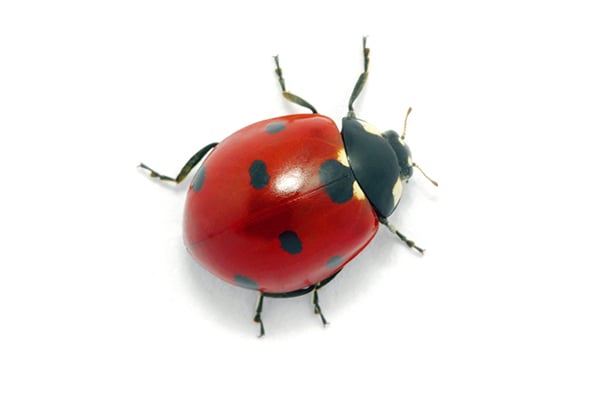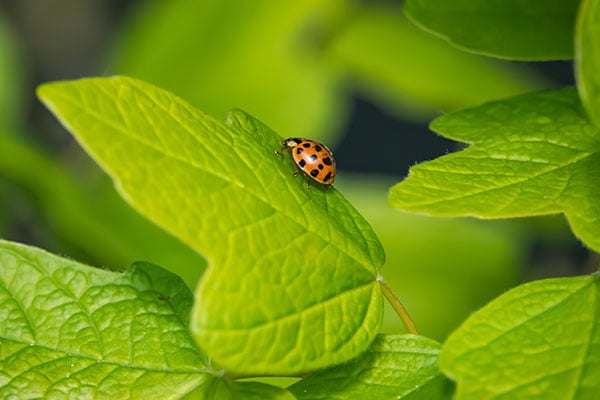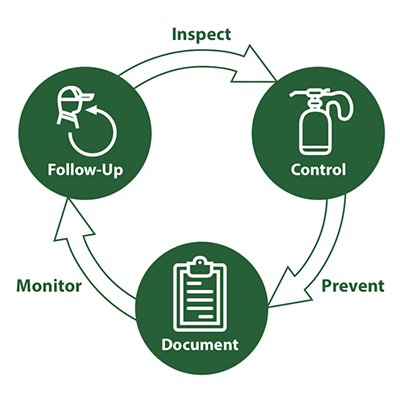Ladybug Infestation Pest Control
Signs of Infestation
These beetles are found to be attracted to sunnier areas and will congregate on the southwest sides of a structure. Attics, wall voids, and other protected locations tend to be where they gather most often. They will then gain entry through cracks around doors and windows, behind the siding and other areas that are susceptible to pest infestation. Lady beetles can fit through openings as small as 1/8 inch in size making homes and buildings easily accessible.
Contact Plunkett's today for a FREE estimate!
Appearance And Behavior
Lady Bugs are a family of beetles that includes Asian Lady Beetles. They are different from each other, but for our purposes here, either way, we don’t want them overwintering in our space.
Multicolored ladybugs, also known as Asian Lady Beetles or Lady Beetles, are smoothly oval in shape, with a convex body; they may or may not be marked with spots, but all have a black “M” or “W” marking on their pronotum, the shield that hides their head. While mostly known for their red coloring and black spots, ladybugs vary in color and are often found in shades of tan and orange as well as red.
Ladybugs are probably the most easily recognized of all insects. There are hundreds of kinds of similar beetles in the United States. Ladybugs are causing some concern among homeowners because of their sheer numbers. Purposefully introduced into the southern United States some years ago to assist in the control of aphids in farm crops, these pests first started appearing in the Upper Midwest in 1998. In 2000, they began invading houses in large numbers. They start infesting homes and buildings in the autumn or fall months as they leave yards and other summer feeding areas in search of a warm place to overwinter.

Although ladybugs can be a nuisance when they occur in large numbers, they do not infest wood, destroy fabrics, eat our food, or damage other property. Ladybugs don’t sting, but they do bite. When ladybugs are alarmed, they secrete a strong-smelling yellowish liquid from the joints in their legs, which can leave behind stains. They are not known to carry disease but they are a serious pest of soybeans.
Ladybug Prevention

Keeping them out in the first place is the best cure (more on that later). Once they’ve gotten in, the only solution is to kill them, one at a time, until all of those who have chosen to overwinter in your home are gone. If a large number have gotten in, you can use an insecticide spray and simply vacuum up the dead ones. Contacting Plunkett’s Pest Control before or at the first sign of an infestation is the most effective way to ensure your property is kept free of ladybugs. We can keep all the fall invaders (Ladybugs, Box Elder Bugs, Cluster Flies) out of your home altogether by wholly treating the outside of your structure. This will dramatically reduce populations that come in contact with the structure and prevent penetration into the interior.
Our Ladybug Control Process
Controlling ladybug problems is a difficult task and while sealing cracks and spaces around doors, windows and foundations are helpful, it may not completely deter these nuisance pests.
If ladybugs have infested your property, call Plunkett’s Pest Control as soon as you notice them to prevent a larger pest problem.
For preventative protection, learn more about our Fall Invader Program.

Ladybug Control With Plunkett's
At Plunkett’s, our goal is to help you quickly, conveniently, and in the most cost-effective way. We make every effort to be with you asap, usually within a day or two.
Learn More
There are a good number of flying insects that are particularly likely to make pests of themselves around your home. Some of the most common examples of flying insects Plunkett’s encounters frequently include:






